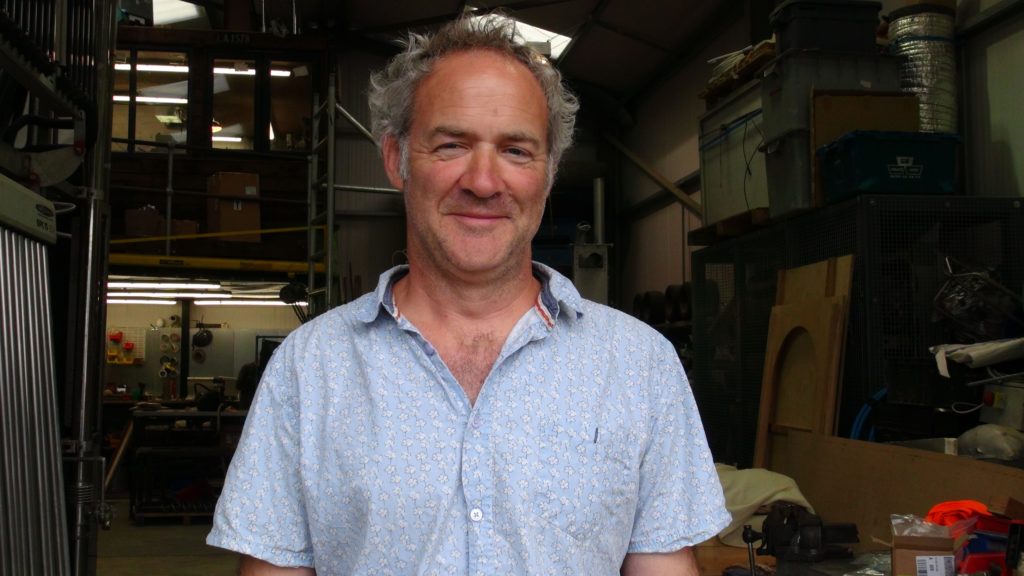Interview Series #3
Building the Future: Engineering Trailers for Advanced Digestate Processing
Guy Blanch is a highly experienced professional with a 20-year background in equipment development for the agricultural and waste sectors. His expertise lies in designing and fabricating anaerobic digestion (AD) technologies, ranging from micro digesters to biomethane upgrading equipment. He actively collaborates with AD operators to create integrated systems and is passionate about bringing the benefits of micro AD to communities in the UK, cold climates, and developing countries. Guy’s work focuses on optimizing efficiency and sustainability in waste management for a greener future.

Q: You and your team are responsible for building the two trailers that make up NOMAD. Can you tell us a little bit more about them?
The purpose of trailer one is to process the raw digestate, it’s the ‘dirty’ part of the process. Basically, we’re separating the solids from the liquid fraction. In that process, we can also carry out pasteurisation, which is to help remove the pathogens and sterilise the digestate material that comes in. Trailer two is just purely working on the liquid fraction.
There’s three main elements to the NOMAD process; heat recovery (HR), nutrient recovery (NR) and the removal of pharmaceutical compounds (AR) .The heat recovery stage is for minimising the huge energy demand of pasteurising the material when it comes in. The reason we do that is to make sure any biofertilizers that we’re making are biologically safe and reduced in pathogens.
Q: How different was building trailer one to trailer two?
Good question. Trailer two wasn’t supposed to exist; on paper we had to add trailer two later, and then because of time constraints, we had to finish the Trailer 2 build first. It was much simpler in terms of the build process on board, whereas the complexities of transportation & logistics between the EU & the UK were much more challenging.
Trailer one has been a massive project in terms of packaging all the equipment & systems and fitting it in within all the small amounts of space that we have. I know it looks like a big trailer, there is still a lot of equipment to fit in.
Both trailers in the NOMAD process have been an enormous challenge to the LEAP team.They all deserve much praise for the efforts put in and for finding creative solutions to this most challenging subject of processing digestate
Q: Dealing with animal waste and digestate can be a smelly process. How do you deal with some of the odours coming from this process?
If we’re going to be processing and demonstrating the technology, we want to make sure that the smell is reduced to a minimum. When you start heating up this material and mixing it, you get a lot of smells and volatile odours. We’re washing this air with cold water, to try and capture those volatiles and then hopefully recover any escaping nutrients back to the liquid fraction.
Q: What do you consider the most interesting part of building the NOMAD truck?
The most interesting part for us is bringing all the different bits of equipment together and actually working it into a process with the suppliers. We’ve worked with hundreds of suppliers during the NOMAD project and spoken to heaps of technical people during the build of the project.
Right at the beginning of the project (early 2020) we lost a key partner to CvD, three months into the design of the control system. We had to find a new control partner and start again. Virtually all our suppliers have expressed an interest in the NOMAD project and in some way, offered support to us.
We’ve taken bits of equipment from all sorts of other industries. For example, we’re using equipment from fruit juicing and we’re now using it in the NOMAD process. It’s lower tech, more cost effective and uses less space than some of the conventional equipment used in wastewater treatment plants.
Q: The initial capacity of these trailers is to process five tons of digestate. Will these trailers be able to process a much bigger quantity in the future?
The NOMAD design process has undergone many revisions and changes even during the build stage of the prototype trailers to achieve a five tonne capacity. For sure – there will be a significant capacity increase in the next designs, there is much digestate in the UK & EU needing processing! Some of the larger AD digesters are now processing five tonnes of feedstock every hour. We will probably transition away from mobile to static on-site processing technology for the larger AD systems.